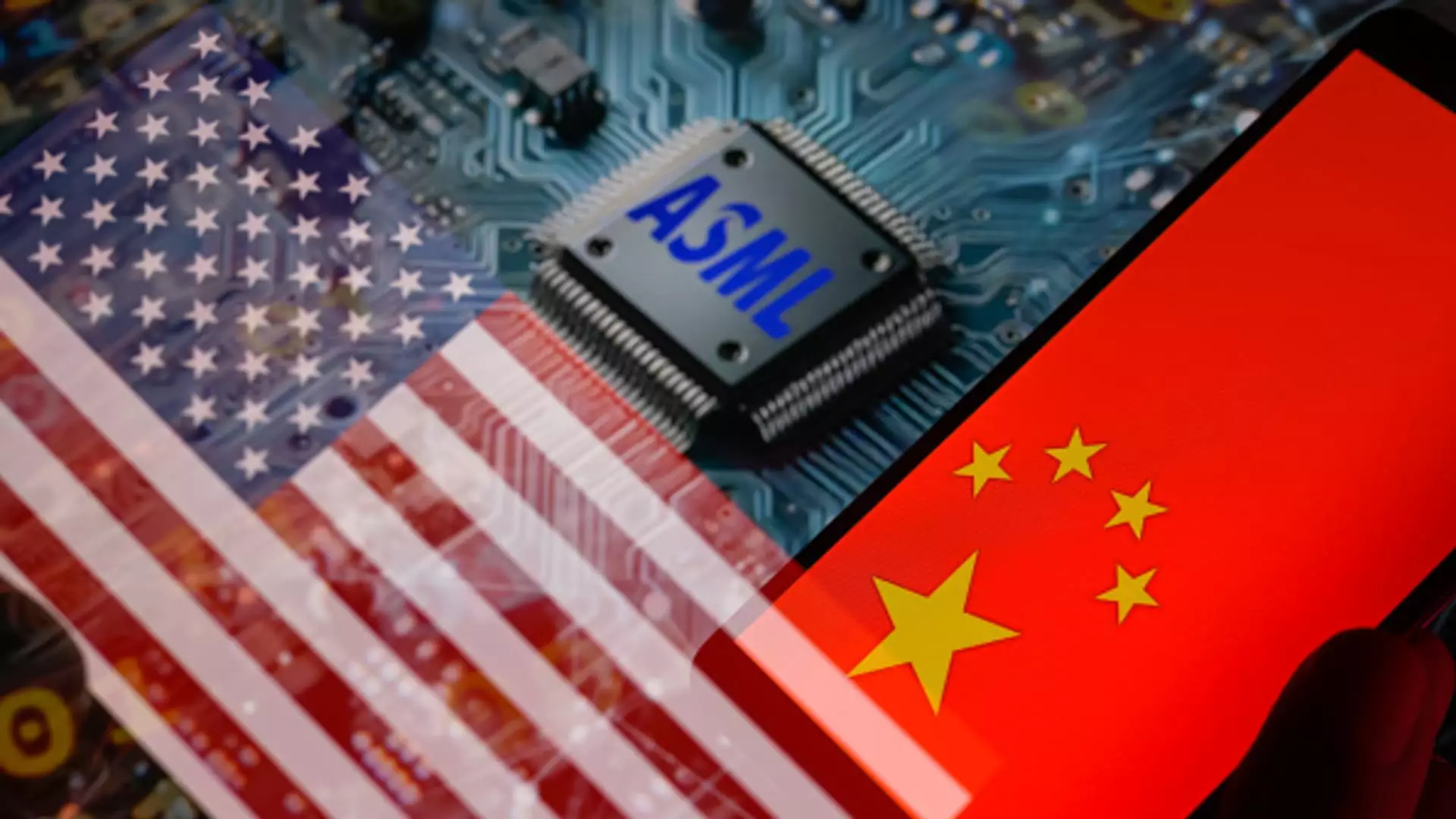In a rapidly evolving technological landscape fraught with geopolitical tensions, the latest earnings report from ASML has sparked concern within the semiconductor industry. The Dutch company, which produces essential tools for chip manufacturing, has indicated that U.S. export restrictions on its advanced manufacturing equipment will likely have significant repercussions on its sales dynamics in China. The company now anticipates net sales for 2025 to dwindle to a range of 30 to 35 billion euros, reflecting a noticeable decline compared to previous forecasts. This situation encapsulates not just the company’s performance, but also the overarching geopolitical complexities that are reshaping global markets.
ASML’s earnings report conveyed a stark warning: while the company reported a commendable net sales figure of 7.5 billion euros in the third quarter—exceeding analyst expectations—the overall sentiment was marred by disappointing net bookings of merely 2.6 billion euros, a far cry from the anticipated 5.6 billion euros. The abrupt collapse of ASML’s stock by 16% on one day alone, resulting in a staggering loss of over $50 billion in market capitalization, underscores the severity of investor reactions triggered by these developments.
Analysts have posited that the dip in net bookings primarily stems from decreased demand from notable clients like Intel and Samsung. Roger Dassen, ASML’s CFO, suggested that the company’s operations in China will now occupy a “more normalized” proportion of its overall order book. This can be contrasted with the historically significant 29% of sales that ASML generated from the Chinese market last year, which is now projected to plummet to around 20% by 2025. The implications of such a drastic decline signal broader issues at play, particularly the fallout from international trade tensions.
The strategic actions taken by the Dutch government—with the reinforcement of export controls—reflect a concerted effort to maintain a competitive edge in an industry that is pivotal for technological advancement. Historically, ASML has not been able to sell its cutting-edge extreme ultraviolet (EUV) lithography machines to Chinese clients, with local firms resorting instead to the less advanced deep ultraviolet (DUV) systems. The recent stockpiling of these older machines suggests a desperate bid by China to circumvent impending restrictions, thus indicating the significant reliance both parties have on each other.
The implications of these export restrictions extend beyond mere fiscal projections; they may herald a seismic shift in the landscape of global semiconductor manufacturing. According to Bank of America analysts, ASML’s forecast indicates a staggering 48% revenue decline from the Chinese market year-over-year, significantly exacerbating the anticipated 3% decline that was initially postulated. Such projections reveal the fragility of ASML’s dependence on China—a lucrative market that has become increasingly imperiled by geopolitical maneuverings.
Industry experts have also commented on the potentially long-lasting effects of these developments. Abishur Prakash, founder of The Geopolitical Business, emphasized that ASML, much like Intel, is heavily reliant on the Chinese market for its profitability. As trade restrictions diminish, the demand for ASML’s machinery could recede, not only in China but on a global scale. This raises critical concerns: if ASML cannot maintain a viable presence in China, what does that mean for its expansion plans and revenue generation prospects elsewhere?
ASML’s recent earnings report shines a light on the increasingly complex interplay between geopolitical dynamics and corporate profitability. The company’s significant downturn in sales projections for China showcases the harsh truths of an industry caught in the crossfire of national interests and economic diplomacy. While the firm showcases resilience in historical sales figures, the looming restrictions prompt serious questioning about its future viability in a market that remains critical for semiconductor manufacturing.
As ASML adjusts its strategy to counter the uncertainties wrought by geopolitical tensions, industry players must remain vigilant. The reality of diminished revenue from China presents not just a challenge but also an opportunity for innovation and adaptation. The semiconductor sector is at a critical juncture, and the evolving narrative will likely redefine who emerges as the key players in an ever-shifting global supply chain.

